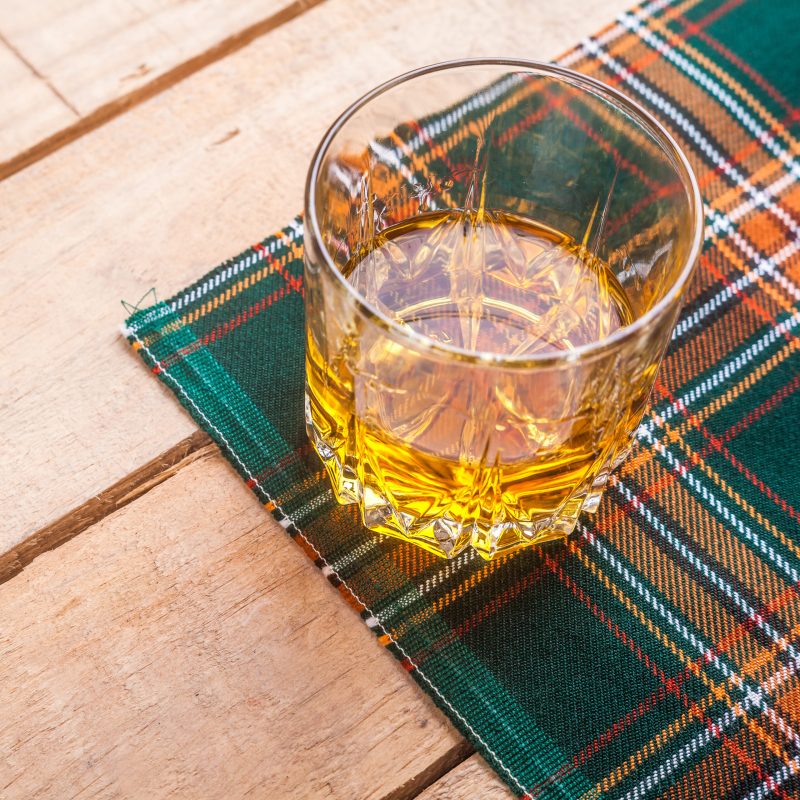
Whisky is Scotland’s national drink and a source of pride for many Scots. The fiery, sophisticated product is a key component in drinks like the Old Fashioned, Blood and Sand, and Rusty Nail. Whether swirled into a cosmopolitan cocktail or served neat, Scotch whisky has long been associated with everything refined, tasteful, and downright delicious.
Videos by TravelAwaits
The fine art of whisky-making continues to be perfected in Scotland, and each of the country’s 109 distilleries puts its own unique spin on the drink. There are regional differences as well, with each product reflecting the area of Scotland that it originated in.
The best place to enjoy this beverage is the very land where it was born. These seven tips will help you maximize your Scotch whisky enjoyment while in Scotland.

1. Go For An Immersive Experience
One of the best ways to fully appreciate Scotch whisky is to learn about how it’s created, from soup to nuts. The Scotch Whisky Experience in Edinburgh offers a crash course on how Scotch is made, the varieties of Scotch whiskies available, and the best way to sample and appreciate Scotch. Part of the experience involves a ride through the whole whisky-making process in a barrel-shaped car, which may not be suitable for those with mobility limitations.
Fortunately, the Scotch Whisky Experience also offers a virtual tour and information on accessibility. After the tour, you will have the opportunity to sample plenty of Scotch whiskies in the tasting room or enjoy whisky and food pairings. There is a gift shop on-site, so you can pick up special goodies for loved ones back home.
2. Understand The Regional Differences
There is no universal Scotch whisky, since each region has its own blend and flavor profile. Each of the five Scotch whisky regions celebrates the national drink in its own way, and no true Scotch whisky experience would be complete without sampling them all.
Speyside Scotch whiskies have subtle notes of fruit and spices and a touch of sweetness to them. Campbeltown varieties are generally big and bold, and some aficionados claim that they can pick up hints of smoke or vanilla. Lowland Scotch whiskies are lighter and easier to drink on the rocks or neat, with floral and sweet notes. Highland Scotch whiskies are floral as well, but they rely more on dusky notes of heather. Whiskies from Islay are the easiest to identify. These varietals are robust and peaty, with a strong smell and lots of character. Generally speaking, people either love or hate Islay Scotch whisky.
3. Give The Malt Whisky Trail A Whirl
Make the most of Scotland’s whisky regions by seeing them on a tour. Your local guide will explain the characteristics of each distillery and provide valuable insight into how each type of Scotch whisky is produced. If you’d prefer to go at it alone, you can follow the Malt Whisky Trail, which crisscrosses the country and hits the very best distilleries.
If you want to sample all of the best whiskies in one place with like-minded Scotch whisky enthusiasts, you can always check out a whisky festival. There are plenty of regional celebrations, but one of the best and most comprehensive is the Edinburgh Whisky Festival. As a bonus, you will have the opportunity to explore Scotland’s most fascinating city while sampling your Scotch whisky!

4. Make Sure You’re Using The Right Glass
Not all glasses are created equal, especially when it comes to enjoying Scotch whisky. The famous Glencairn glass is the ultimate vessel for enjoying Scotland’s most precious product. It’s shaped like a tulip, with the whisky resting in the bulb near the bottom. The idea is that the spectacular aromas will be directed upward into the tapered part, where you can easily smell them before even putting the glass to your lips.
You can find Glencairn glasses all over Scotland. Many whisky tastings or festivals give them away to patrons. Once you’ve sipped fine Scotch whisky out of a Glencairn glass, you will never go back. Also, these glasses are notoriously difficult to spill, since the narrow top prevents even one drop of precious whisky from leaking out, even when the glass is laid on its side.
5. Know That The Cask Makes A Difference
Scotch whisky takes on the character of its cask. If you tour one of Scotland’s many distilleries, your guide will likely explain what sorts of casks the company uses, and how that affects the final product. They might even have a few different varieties of otherwise identical whisky aged in different casks. If this is the case, try a flight of Scotch whiskies and see if you can pick up on the subtle notes of fruit, spice, or sweetness.
Sherry casks are some of the most popular casks and have been used to age whisky for several hundred years. Speyside distilleries are especially fond of sherry casks, which lend deep and complex flavors to its whiskies. The right cask can lend a whole different level of deliciousness to Scotch whisky.
6. Use Your Nose (And Legs)
As with wine, you should get a good sniff of your Scotch whisky before tasting it. Your Glencairn glass will allow those wonderful aromas to waft toward your nose, giving you a delectable preview of the whisky that you’re about to drink.
Gently swirl the whisky and notice the thin threads of liquid that appear on the side of the glass. Those are known as the legs, and they indicate how alcoholic your whisky will be. Faster-moving legs are indicative of a lighter and less potent product. If your legs slowly creep to the bottom of the glass, however, your whisky packs a serious punch!

7. Don’t Believe Everything You Hear About Scotch Whisky
Some Scotch whisky purists believe that single malts are far preferable to blended varieties, but there’s a compelling argument for giving blends a shot. So-called single malts are really just whiskies that originate from the same distillery; they do not need to have originated from the same cask. Blends allow Scotch whisky craftspeople to fiddle with regional differences, tempering a peaty Islay Scotch with a lighter variety, for instance, or combining Highland and Lowland whiskies for an agreeable drink that emphasizes the best of both worlds. Understanding Scotch whisky and regional differences will allow you to select the blends most pleasing to your palate.
The age question is also furiously debated within the Scotch whisky community. The prevailing wisdom states that older whiskies are better, but this is often not the case. Smoothness, drinkability, and depth of flavor are often products of the cask quality rather than the time spent in the cask. Good casks simply lend phenomenal flavor to Scotch whisky. Some believe that the optimal age for Scotch whisky is roughly 10 years, and that anything beyond is overkill, while others think that more mature whiskies are worth their weight in gold.
Scotch whisky is a delectable drink, one that has been perfected for years on the windy moors and in the seaside villages of Scotland. Understanding how Scotch whisky varies from region to region — as well as how casks play a role in the final product — will enhance your whisky-tasting experience. Learn about this treasured beverage in its motherland by hitting the Malt Whisky Trail, partaking in a festival, or simply sitting down with a local distiller.
Want more to add to your Scotland itinerary? Here are seven reasons to visit Fingal’s Cave, plus how to visit Hirta, the remote Scottish ghost island.

